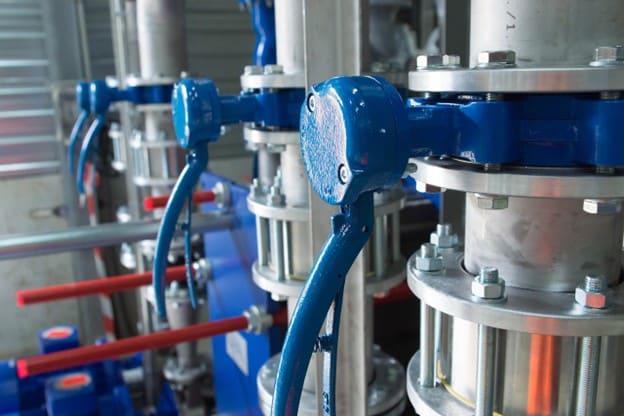Image Source: Pixabay
Most people are familiar with PTFE as a result of its most famous application as a non-stick coating for cookware – and if you fall into this camp, it’s time to expand your horizons. That’s because the material also known as polytetrafluoroethylene is a powerhouse material in the industrial sector due to its unique properties, such as high heat resistance and chemical inertness.
So with that in mind, let’s take a wander past a few examples of how industries harness these traits to optimize their equipment performance and reliability, leaving you better informed and able to appreciate why PTFE is so widely applied, even if it might not hit the headlines that often.
PTFE in Slide Bearings
Slide bearings are crucial in machinery where large-scale, smooth movements are essential – whether that’s in bridges, heavy loading equipment, or architectural structures. PTFE’s role in these bearings is transformative for the following reasons:
- Minimizing Friction: PTFE possesses one of the lowest coefficients of friction among solids. This property drastically reduces resistance during motion, permitting smoother transitions without significant wear and tear on components.
- Enhancing Durability: Unlike traditional materials that might corrode or degrade under extreme conditions, PTFE withstands a wide range of temperatures (from -240°C to +260°C, or -400 °F to 400 °F) and aggressive chemical environments. This resilience extends the life span of slide bearings significantly – which is important as 82% of manufacturers have suffered unintended downtime and costs can skyrocket as a result of the 800-hour annual average for equipment outages.
- Cost Efficiency: By reducing maintenance needs due to its robust nature, PTFE lowers long-term operational costs. Indeed it’s claimed that PTFE is maintenance-free, because it is both self-lubricating and capable of soaking up any particles and debris that come into contact with it, giving it robustness beyond what we’ve discussed already.
At this point, you might be wondering if there are any differences in PTFE vs. Teflon slide bearings, as some units will be marketed as featuring the former while some will indicate that the latter is present. In truth these materials are identical, and Teflon is just the brand-name version of PTFE, so your attention should really be on the other technical aspects of the product in question in order to make an informed decision.
PTFE in Gasket Applications
Gaskets play a pivotal role in ensuring the integrity of mechanical systems by preventing leaks and maintaining pressure. PTFE, with its aforementioned properties, is increasingly being used to enhance gasket performance in various industries.
Here’s why it’s so widely hyped:
- Superior Sealing Potential: The innate flexibility and malleability of PTFE allow it to conform perfectly to surfaces, creating tight seals. This reduces the risk of leaks significantly, which is critical in high-pressure systems.
- Chemical Resistance: A notable advantage of PTFE gaskets is their resistance to almost all chemicals. This feature makes them ideal for use in the chemical processing industry where corrosive substances are common.
- Temperature Tolerance: Once again, since PTFE can stand up to searing heat and chilling cold without losing effectiveness, gaskets made with it maintain their sealing capability across a wide temperature range.
It’s worth pointing out that gasket failure can be costly, with estimates starting at $500,000 for a single day and rising as the scale of the operations impacted ramps up as well.
While mistakes such as choosing the improper gasket for the application in question can be at fault, failures due to wear and tear are also common, so PTFE represents a great choice to prolong the lifespan and reliability of industrial machinery.
PTFE in Valve Seals
Valves are critical components in controlling the flow of liquids and gasses in an array of industrial applications – and are also famously featured in combustion engines. The incorporation of PTFE in valve seals has led to significant advancements in performance and reliability, especially under challenging conditions.
We’ve already talked about many of the perks that it offers, and they apply again here. For instance, PTFE’s impermeability to gasses and liquids ensures that valves seal more effectively, reducing the risk of leakage that can lead to operational failures or safety hazards.
And of course, due to its low coefficient of friction, PTFE minimizes the wear on valve components. This feature is particularly crucial for systems with high cycle frequencies, extending the lifespan of valves considerably – and all of this is not bad for a material that was discovered by accident in the 1930s!
Wrapping Up
Now you know what PTFE brings to the table, keep an eye out for its use in components that are commonplace across industrial machinery, and consider choosing parts that use it when the time to replace consumables arrives.



